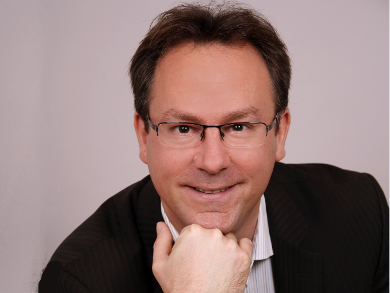When I first used HPLC back in 1998, I was always told by my supervisor that the column pressure should not exceed 200 bar, otherwise, the column might be irreversibly damaged. I remember always looking anxiously at the pressure at the pump when I was running a solvent gradient containing water and methanol. Often, I had to adjust the flow rate so that the recommended maximum pressure would not be exceeded.
High-Temperature Liquid Chromatography
Two years later, I started using high-temperature liquid chromatography. The idea really fascinated me. It was brought to me by an article written by Roger Smith in the LC-GC magazine, entitled “Superheated water: a new look at chromatographic eluents for reversed-phase HPLC”. Could it really be possible to use just water at very high temperatures (up to 200 °C) to perform green chromatography and get rid of toxic organic solvents?
My first experiments were conducted using an old GC oven, as was suggested in most of the publications dealing with that topic. I recall the fascination when I performed my first truly high-temperature separation of selected antineoplastic drugs with a water-only mobile phase.
I soon realized that special equipment would be needed to further push the technology. Therefore, I wrote my first research proposal on the development of a specially designed heating system for HPLC to perform fast temperature gradient programming. At the time, the proposal was almost rejected by one of the reviewers, but in the end, everything turned out okay. We finally succeeded and also found a company that was interested in commercializing the device. Today, high-temperature LC can be performed with specialized equipment in combination with isotope-ratio mass spectrometry for authenticity control of food or to convict doping offenders.
2D Liquid Chromatography
After this exciting adventure, I focused on another special topic, which has gained tremendous momentum today. It is the field of two-dimensional liquid chromatography hyphenated to mass spectrometry. I remember sitting in a brilliant lecture held by Peter Schoenmakers back in 2005. He talked about the theoretical background of comprehensive two-dimensional liquid chromatography. At the time, it was assumed that very fast separations in the second dimension can only be achieved when using isocratic elution. The reason was that the dwell volumes of conventional HPLC systems were very high. You also needed very high flow rates to be extremely fast, which was not really compatible with electrospray ionization mass spectrometry.
This lecture was a great impulse for me to develop a system based on nano-LC in the first and micro-LC in the second dimension. We spent a lot of time to get the system running and, after some very frustrating years, we finally succeeded. Today, Peter is working on three-dimensional structures allowing for extremely complex separations and generating very high peak capacities in a reasonable time.
There is Always Progress
Although it has often been claimed that we cannot expect any further improvements related to HPLC, time has shown again and again that there is always progress. With colleagues from the University Duisburg-Essen, Germany, we are currently involved in a research project aiming to build a “four-dimensional” separation and detection system, combining LC x LC, ion mobility, and mass spectrometry.
And concerning the pressure: I am not worried at all today if the pressure is far beyond 200 bar. Thanks to ultra-high performance liquid chromatography (UHPLC), 600 bar is our new gold standard for routine applications.

Thorsten Teutenberg studied chemistry at Ruhr University Bochum, Germany, where he received his doctorate in analytical chemistry with a thesis on “High-Temperature HPLC”. In 2004, his career took him to the Institute of Energy and Environmental Technology (IUTA) in Duisburg, Germany, as a Research Associate. Since 2012, he has been in charge of the Research Analysis Department, mainly working on the various aspects of high-temperature HPLC, miniaturized separation and detection techniques, and multi-dimensional chromatography processes.
- HPLC Celebrates 50 Years overview page




